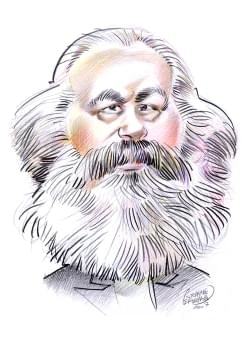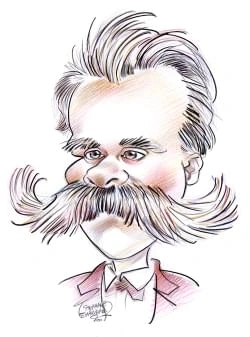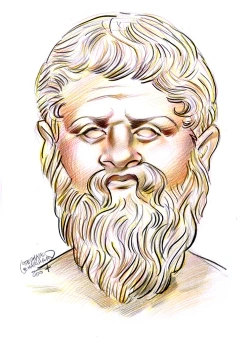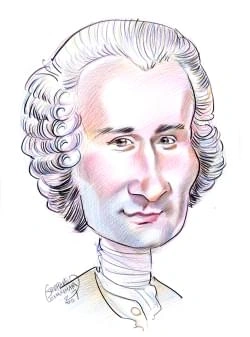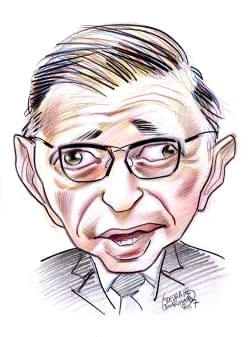222 résultats pour "soil"
-
Greece - country.
minerals, such as chromium, copper, uranium, and magnesium, are relatively small. Greece’s small petroleum deposits, located under the Aegean Sea near the island ofThásos, are rapidly being depleted. There are no significant reserves of natural gas. Greece’s forests, probably abundant in ancient times, have been significantly depleted. Subsequent soil erosion has made reforestation efforts difficult. Although muchof Greece’s soil is rocky and dry, the country’s mountains are interspersed with sm...
-
Egypt - country.
Egypt has a wide variety of mineral deposits, some of which, such as gold and red granite, have been exploited since ancient times. The chief mineral resource ofcontemporary value is petroleum, found mainly in the Red Sea coastal region, at Al ‘Alamayn (El ‘Alamein) on the Mediterranean, and on the Sinai Peninsula. Otherminerals include phosphates, manganese, iron ore, and uranium. Natural gas is also extracted. D Plants and Animals The vegetation of Egypt is confined largely to the Nile Delta,...
-
Laos - country.
by the year 2025. About one-quarter of Laos’s people live in mountainous regions. The rest live in upland valleys or on the flood plains of the Mekong and its tributaries.Just over three-quarters of the population live in rural areas, although the proportion of people living in urban areas is steadily increasing. Vientiane is the capital and largest city of Laos. Louangphrabang, the former royal capital, is an increasingly popular tourist destination. Other major cities are theregional capitals...
-
Guatemala - country.
C Climate The climate of Guatemala varies according to elevation, from hot coastal plains to cold mountain heights. Most of the population lives between 900 and 2,400 m (3,000and 8,000 ft) above sea level, where there are warm days and cool nights with average annual temperatures of 20°C (68°F). The coastal regions are hot and humid,with average annual temperatures of 28°C (83°F). A rainy season, from May through October, is sometimes called “winter” because it brings cloudy afternoons andlower...
-
Tree - biology.
The major parts of a tree are its roots, trunk, leaves, flowers, and seeds. These components play vital roles in a tree’s growth, development, and reproduction. A Roots Trees are held in place by anchoring organs called roots. In addition to anchoring the tree, roots also absorb water and minerals through tiny structures called roothairs. From the roots the water and mineral nutrients are carried upward through the wood cells to the leaves. Although the internal structure of most kinds of roots...
-
Greenhouse Effect.
addition, humans cut down huge tracts of trees for lumber or to clear land for farming or building. This process, known as deforestation, can both release the carbonstored in trees and significantly reduce the number of trees available to absorb carbon dioxide. As a result of these human activities, carbon dioxide in the atmosphere is accumulating faster than Earth’s natural processes can absorb the gas. By analyzing airbubbles trapped in glacier ice that is many centuries old, scientists have d...
-
Burundi - country.
D Way of Life Most Burundians live in self-contained compounds of small round grass huts scattered over the country’s many hills. The rugo , the traditional Tutsi hut, is divided into sections and surrounded by an enclosure and cattle corrals. Families farm scattered plots of land on different soils at different altitudes to minimize crop failure. Thefloors of valleys are avoided due to higher temperatures and tsetse fly infestation. Social roles are largely determined by ethnicity, with the T...
-
Asia - Geography.
Borneo, the world’s third largest island after Greenland and New Guinea. To the southeast is the Timor Sea separating the Asian island of Timor from the Australiancontinent. The Indian subcontinent is flanked by the Bay of Bengal on the east and the Arabian Sea on the west. The island of Sri Lanka and the much smaller Maldives andNicobar Islands trail away to the south. The Arabian Sea’s Gulf of Aden, the Red Sea, the Mediterranean Sea, and the Black Sea form an arc along the western rim of Asia...
-
-
Asia - History.
Borneo, the world’s third largest island after Greenland and New Guinea. To the southeast is the Timor Sea separating the Asian island of Timor from the Australiancontinent. The Indian subcontinent is flanked by the Bay of Bengal on the east and the Arabian Sea on the west. The island of Sri Lanka and the much smaller Maldives andNicobar Islands trail away to the south. The Arabian Sea’s Gulf of Aden, the Red Sea, the Mediterranean Sea, and the Black Sea form an arc along the western rim of Asia...
-
Uzbekistan - country.
E Environmental Issues The evaporation of the Aral Sea is one of the worst ecological disasters in the world. The Aral has shrunk so much that it now holds only about one-fifth the volume ofwater it held in 1960. The shrinkage is due to irrigation withdrawals from the Amu Darya and Syr Darya, a practice that began on a massive scale in the early 1960s aspart of the Soviet Union’s ill-conceived drive to increase cotton yields in Central Asia. Growing cotton in the naturally arid and saline soil...
-
Vietnam - country.
E Natural Resources Vietnam’s most valuable natural resource is its land, particularly the fertile, alluvial soils in the Red and Mekong deltas. Some 29 percent of the land is currently beingcultivated. Vietnam has some valuable mineral resources, including gold, iron, tin, zinc, phosphate, chromite, apatite, and anthracite coal. Most deposits are located in the northernpart of the country. Few attempts were made to extract these minerals until the French takeover of Vietnam at the end of the 1...
-
Native Americans of Middle and South America.
A line that snakes across central Mexico near the Tropic of Cancer forms the northern boundary of Mesoamerica; north of this line rainfall sharply declines and theclimate is much drier. The ancient civilizations of Mesoamerica all arose and developed in the area between this line and the Guatemalan highlands far to the south. Richvolcanic soils are found throughout much of the region. A2 People and Languages Mesoamerica was a great melting pot, home to many peoples and interrelated cultures. In...
-
Apollo Program - astronomy.
Moon’s orbit; rendezvousing and docking with the CSM; and finally, setting a course home to Earth. On return to Earth, the spacecraft was slowed by drag from Earth’satmosphere and by parachutes (just before splashdown), before landing in the ocean. The transit time to and from the Moon was approximately three days each way.Depending on the specific mission, the time in lunar orbit ranged from less than one day for Apollo 8 to over six days for the final three missions, and the time on thelunar s...
-
Apollo Program - U.
Moon’s orbit; rendezvousing and docking with the CSM; and finally, setting a course home to Earth. On return to Earth, the spacecraft was slowed by drag from Earth’satmosphere and by parachutes (just before splashdown), before landing in the ocean. The transit time to and from the Moon was approximately three days each way.Depending on the specific mission, the time in lunar orbit ranged from less than one day for Apollo 8 to over six days for the final three missions, and the time on thelunar s...
-
Planetary Science - astronomy.
III ORIGINS AND COMPOSITIONS OF PLANETS Astronomers believe that planetary systems are formed of elemental materials that were created in the interiors of giant stars. Some of this material comes from giantstars that shed material into space as they age. Most of the matter to form planets, however, comes from stars that explode as supernovas and spread debris enrichedwith the heavier chemical elements into space. According to the currently accepted views, the most likely first stage in the evo...
-
Finland - country.
Productive forestland is the most valuable natural resource of Finland. Spruce, pine, and silver birch are the principal trees used to manufacture wood and pulp andpaper products. Finland lacks coal and petroleum resources and is a net importer of energy resources. However, Finland does have significant deposits of peat, which is cut from thenumerous peat bogs that cover much of the north. Peat is an important heat source for homes, and it provides about 7 percent of Finland’s electricity needs....
-
-
Bulgaria - country.
E Climate Most of Bulgaria has a continental climate, with cold winters and hot summers. The climate in general is more severe than in other European areas of the samelatitudes, and the average annual temperature range is greater than that of neighboring countries. Severe droughts, frosts, winds, and hail storms frequently damagecrops. A Mediterranean climate, with dry summers and mild, humid winters, prevails in the valley of the southwestern Rhodope Mountains; the northern limit of theclimati...
-
Comoros - country.
Since 1981 the currency has been the Comorian franc. The Comorian franc had a fixed exchange rate with the French franc of 50 to 1 until 1994, when the rate was changed to 75 Comorian francs to 1 French franc. In 2006, the Comorian franc exchanged at an average of 392 to U.S.$1. Transport between the islands is mostly by air, and there is an international airport at Hahaia on Njazidja where jets can land. Road networks have been built betweenmost of the main island settlements, but the mountai...
-
Earthquake.
III CAUSES Most earthquakes are caused by the sudden slip along geologic faults. The faults slip because of movement of the Earth’s tectonic plates. This concept is called theelastic rebound theory. The rocky tectonic plates move very slowly, floating on top of a weaker rocky layer. As the plates collide with each other or slide past eachother, pressure builds up within the rocky crust. Earthquakes occur when pressure within the crust increases slowly over hundreds of years and finally exceeds...
-
Fossil Fuels.
water molecules. This crystalline solid is known as gas hydrate. Because technology for the commercial extraction of gas hydrates has not yet been developed, this typeof fossil fuel is not included in most world energy resource estimates. However, in February 2007 the U.S. Department of Energy completed the drilling of a well toretrieve core samples of gas hydrates found in the Prudhoe Bay region of Alaska’s North Slope. By identifying the nature of these gas hydrates, the Energy Departmenthoped...
-
Costa Rica - country.
protection from future deforestation is not guaranteed. Deforestation places Costa Rica’s rich biodiversity in danger. The country’s location on the cusp between Northand South America and its abundance of tropical forests make it home to a great variety of species, many of them rare and threatened. Deforestation also contributesto the country’s problematic rate of soil erosion. Costa Rica is party to international treaties concerning biodiversity, climate change ( see Global Warming), endangere...
-
Bacteria - biology.
A2 b Bacterial Killers Some dramatic infectious diseases result from exposure to bacteria that are not part of our normal bacterial community. Cholera, one of the world’s deadliest diseasestoday, is caused by the bacterium Vibrio cholerae . Cholera is spread in water and food contaminated with the bacteria, and by people who have the disease. After entering the body, the cholera bacteria grow in the intestines, often along the surface of the intestinal wall, where they secrete a toxin (poiso...
-
India - country.
delta in the north, are intensely farmed. B Rivers and Lakes The rivers of India can be divided into three groups: the great Himalayan rivers of the north, the westward-flowing rivers of central India, and the eastward-flowingrivers of the Deccan Plateau and the rest of peninsular India. Only small portions of India’s rivers are navigable because of silting and the wide seasonal variation inwater flow (due to the monsoon climate). Water transport is thus of little importance in India. Barrages,...
-
Prokaryote - biology.
earliest organisms to evolve, an estimated 3.4 billion to 3.5 billion years ago. The environment of the early Earth lacked oxygen, and cyanobacteria probably usedfermentation (a chemical process performed without the presence of oxygen) to produce the energy molecule adenosine triphosphate (ATP). Cyanobacteria introduced oxygen into the atmosphere through the process of photosynthesis. As the oxygen content in the atmosphere increased over the centuries, bacteria evolved that usedthis oxygen in...
-
-
Burkina Faso - country.
powers to promote the welfare of the people. The Lobi live in the southwest as farmers and hunters. Defiant of newcomers, they live in small terraced fortifications. The Bobo are chiefly farmers, artisans, and metalworkers living in large villages in the west-central part of the country. The Gourounsi are mainly artisans and farmers in the south-central areas. Their society is lesshighly structured than that of the other Voltaic groups. Christianity has made substantial inroads among them. The M...
-
Aztec Empire.
tribute to the empire in agricultural products, which were used to finance public projects. All able-bodied men owed military service to the empire. Citizens could also bedrafted to work on public lands or build temples, dikes, aqueducts, and roads. Although Aztec society had strict classes, a person’s status could change based on his or her contribution to society. Commoners could improve their rank, especially byperforming well in battle, and become prosperous landowners. Young people of some...
-
Aztec Empire - USA History.
tribute to the empire in agricultural products, which were used to finance public projects. All able-bodied men owed military service to the empire. Citizens could also bedrafted to work on public lands or build temples, dikes, aqueducts, and roads. Although Aztec society had strict classes, a person’s status could change based on his or her contribution to society. Commoners could improve their rank, especially byperforming well in battle, and become prosperous landowners. Young people of some...
-
Fire - chemistry.
were usually natural caves. Eventually people learned to dip branches in pitch to form torches. They created crude lamps by filling a hollowed out piece of stone withmoss soaked in oil or tallow (a substance derived from animal fat). By cooking with fire, prehistoric people made the meat of the animals they killed more palatable and digestible. They learned to preserve meat by smoking it over a fire,vastly decreasing the danger of periodic starvation. Cooking also enabled them to add some for...
-
Technology.
loose soil in this region, known as the Fertile Crescent, was easily scratched for planting, and an abundance of trees was available for firewood. By 5000 BC, farming communities were established in areas known today as Syria, Turkey, Lebanon, Israel, Jordan, Greece, and the islands of Crete and Cyprus. Agricultural societies in these places constructed stone buildings, used the sickle to harvest grain, developed a primitive plowstick, and advanced their skills inmetalworking. Trade in flint al...
-
Colombia - country.
In Bogotá the average high temperature in January is 20°C (68°F), and in July the average high is 19°C (65°F). The highs for the same months in Barranquilla are 32°C(89°F) and 33°C (91°F). Throughout the year, three-month periods of rain and dry weather alternate. Along the Pacific coast precipitation is heavy. At Bogotá the annual rainfall averages about1,060 mm (about 42 in), and in Barranquilla it averages about 800 mm (about 32 in). Dry weather prevails on the slopes of the Cordillera Orient...
-
Syria - country.
D Education Primary education is free and compulsory for all children aged 6 through 12. Some 78 percent of the adult Syrian population was estimated to be literate in 2005.Primary schools enrolled 2.8 million pupils in the 2000 school year, and 1.1 million students attended secondary schools and vocational institutes. In 1998, 94,110 Syrian students were enrolled in institutes of higher education. Syria has universities in Damascus, Ḩalab, Ḩim ş, and Al L ādhiq īyah. Also in Damascus isthe Ar...
-
Mammal - biology.
On land, mammals live in many different habitats, and at a wide range of altitudes. Many mammals dig burrows as refuges or as places to raise their young, but somehave developed a largely subterranean lifestyle, feeding on small animals or plant roots beneath the soil's surface. These animals, including moles and mole-rats, digthrough the ground either with spadelike front paws or with their teeth, and they detect danger by being highly sensitive to vibrations transmitted through the soil.Most m...
-
-
Arctic - Geography.
The Arctic is not a frozen desert devoid of life on land or sea, even during the cold, dark winter months. Spring brings a phenomenal resurgence of plant and animal life.Low temperatures are not always the critical element—moisture, the type of soil, and available solar energy are also extremely important. Some animals adapt well toArctic conditions; for instance, a number of species of mammals and birds carry additional insulation, such as fat, in cold months. Arctic summers with extended dayli...
-
Honduras - country.
A Principal Cities The capital and largest city of Honduras is Tegucigalpa (2006 estimate, 1,324,000), located in the south-central highlands region. The country’s second largest city isSan Pedro Sula (549,498). The principal city and commercial center in the north, it lies in the heart of the vast banana plantations on the Caribbean Sea. La Ceiba(127,590) and Puerto Cortés (90,161) are among the leading Caribbean ports. B Language and Religion Spanish is the official language and is spoken by...
-
Iraq - country.
The Euphrates begins in Turkey, crosses Syria, and enters Iraq at Abū Kam āl. The flow of the Euphrates into Iraq has been greatly reduced by dams built by Turkeyand Syria. The gradient of the Euphrates above the town of H īt, in west central Iraq, is steep. In the 2,640 km (1,640 mi) from its source in Turkey to H īt, the river fallsfrom 3,000 m (10,000 ft) to a low water elevation of 50 m (170 ft) above sea level, an average drop of 1 m per km (6 ft per mi). In Iraq below H īt the fall is very...
-
National Parks and Preserves.
Some ibex raised in Italy’s 700 sq km (220 sq mi) Gran Paradiso National Park (1922) were transferred to aid herd restoration elsewhere in the country. Switzerlandreturned lynx to Swiss National Park to keep red deer populations in check. The growth of national parks also enabled many European countries to restore forests thathad given way to industrialization by the early 20th century. Africa’s wildlife was hunted heavily from the late 19th century well into the 20th century. By 1920 big-game h...
-
Bangladesh - country.
F Environmental Issues Waterborne diseases such as cholera are a serious threat to public health in Bangladesh. Until the 1970s, many of Bangladesh’s people became sick from drinkingpolluted water drawn from surface rivers. Aid agencies such as the United Nations Children’s Fund (UNICEF) built shallow wells throughout the country to help provide asafe source of drinking water to Bangladesh’s poor. In the 1990s, however, it was discovered that many of these wells were contaminated by arsenic, a...
-
Algeria - country.
areas to fishing. National parks, including the giant Tassili N’Ajjer National Park in the eastern corner of the country, comprise a large proportion of the protected area. The effects of Algeria’s human population on the fragile landscape have been severe. The greatest ecological threats are deforestation and burning of scrub vegetation,conversion of steppe habitat to arable land, and soil erosion due to overgrazing and poor farming practices. Pollution of Mediterranean coastal waters is pervas...
-
Ghana - country.
times of depressed cacao prices, Ghana has significantly increased exports of timber to generate needed revenue. In 1988 Ghana initiated a conservation plan called the Forest Resource Management Project. In 1989 Ghana restricted the export of 18 tree species, and in 1994 thecountry banned the export of raw logs. About 4.8 percent (1997) of the country’s land is officially protected, but illegal logging threatens Ghana’s remaining forests. Deforestation, overgrazing, and periodic drought have led...
-
Switzerland - country.
formation over higher elevations. The wind reverses direction about sundown and moves down the valley as a cool downdraft. The foehn, which occurs during the wintermonths, is a dry and relatively warm airflow that is drawn northward over the Alps. The foehn can quickly melt snow and ice, increasing the risk of mudslides andavalanches. D Natural Resources Waterpower is the chief natural resource of Switzerland. The principal source of water is runoff from the considerable annual precipitation th...
-
-
Turkey - country.
has a general elevation of 900 to 1,500 m (3,000 to 5,000 ft) above sea level. The eastern highlands region is the most mountainous and rugged portion of Turkey; Mount Ararat (Ağrı Da ğı) is the highest peak in the country at 5,165 m (16,945ft). Many Christians and Jews believe it to be the same Mount Ararat mentioned in the Bible as the place where Noah’s ark came to rest. The eastern highlands are thesource for both the Tigris (Dicle) and Euphrates (Fir āt)—two of southwestern Asia’s principal...
-
American Civil War.
free state to keep the balance in the Senate. It also provided that slavery would be excluded from the still unorganized part of the Louisiana Territory. A line was drawnfrom Missouri’s southern boundary, at the latitude of 36°30’, and slavery would not be allowed in the territory north of that line,with the exception of Missouri. B Compromise of 1850 Agitation against slavery continued in the North. The South reacted by defending it ever more strongly. The Mexican War, by which the United Stat...
-
American Civil War - U.
free state to keep the balance in the Senate. It also provided that slavery would be excluded from the still unorganized part of the Louisiana Territory. A line was drawnfrom Missouri’s southern boundary, at the latitude of 36°30’, and slavery would not be allowed in the territory north of that line,with the exception of Missouri. B Compromise of 1850 Agitation against slavery continued in the North. The South reacted by defending it ever more strongly. The Mexican War, by which the United Stat...
-
Japan - country.
island’s fertile soils support agriculture and provide the vast majority of Japan’s pasturelands. In addition, Hokkaidō contains coal deposits, and the cold currents off itsshores supply cold-water fish. Winters are long and harsh, so most of Hokkaid ō is lightly settled, housing about 5 percent of Japan’s population on approximately 20 percent of its land area. However,its snowy winters and unspoiled natural beauty attract many skiers and tourists. Hokkaid ō is thought of as Japan’s northern fr...
- Compost.
- Weed - biology.
- Earthworm - biology.
-
Asia - geography.
the Himalayas, the world’s highest mountain system. The Pacific Ocean plate drifted westward, scraping along the Eurasian plate and slipping under its coastal edge. This created the islands of Japan, Taiwan, the Kurils, theRyūky ūs, and the Philippines. Southeast Asia lies at the intersection of the Eurasian, Pacific Ocean, and Indian Ocean plates. Over time the contact between these platescreated the mountain ranges of mainland Southeast Asia. The continued slow movement of the plates causes fr...
-
-
Asia - history.
the Himalayas, the world’s highest mountain system. The Pacific Ocean plate drifted westward, scraping along the Eurasian plate and slipping under its coastal edge. This created the islands of Japan, Taiwan, the Kurils, theRyūky ūs, and the Philippines. Southeast Asia lies at the intersection of the Eurasian, Pacific Ocean, and Indian Ocean plates. Over time the contact between these platescreated the mountain ranges of mainland Southeast Asia. The continued slow movement of the plates causes fr...
- Erosion.
}})



